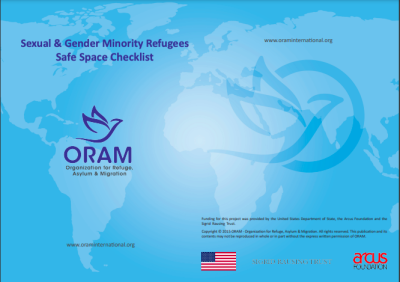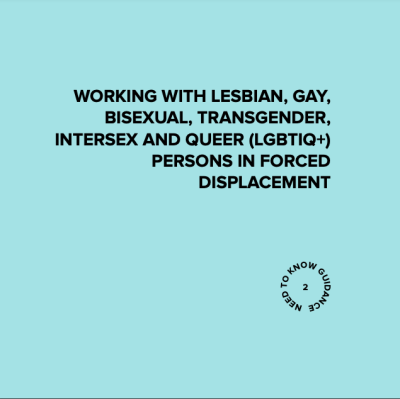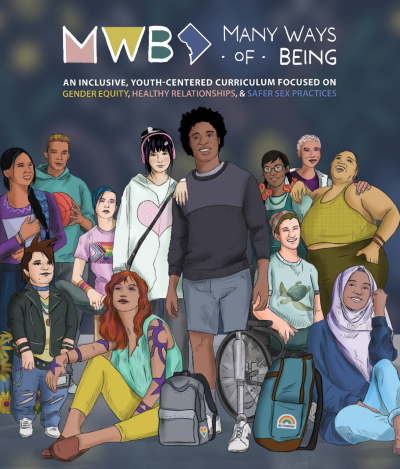LGBTQIA+
People of diverse sexual orientations, gender identities, gender expressions, and sexual characteristics face a complex array of challenges at home and in displacement.
Despite considerable progress in legal protection and inclusion, many lesbian, gay, bisexual, transgender, queer, intersex, asexual and agender (LGBTQIA+) people continue to face significant barriers to life and learning. 69 countries criminalise consensual same-sex sexual acts - making it illegal to be LGBTQIA+ in one-third (32%) of the world. 11 countries impose the death penalty for consensual same-sex activity. Violence and persecution on the basis of sexual orientation, gender identity, gender expression, and sexual characteristics (SOGIESC) are major factors causing displacement and impacting the health and wellbeing of LGBTQIA+ people around the world.
These barriers extend to schools and learning centers. 59 countries have laws, rules, and regulations that outlaw forms of expression related to SOGIESC. In at least 19 of them, laws are specifically designed to apply to education. These include, but are not limited to, banning books and educational materials on sexual and gender diversity, prohibiting educators from discussing sexual and gender diversity, and banning comprehensive sexuality education in primary and secondary schools.
LGBTQIA+ learners routinely face bullying and discrimination. Globally, 42% of LGBTQIA+ youth reported having been ‘ridiculed, teased, insulted or threatened at school.’ 37% reported feeling rarely or never safe at school. This persecution and fear of persecution, combined with the stress of displacement, can become toxic, and result in higher rates of absenteeism and school drop out, as well as lifelong learning impairments and physical and mental health issues.
Key Concepts:
Sex: The physical and biological characteristics that distinguish males and females. It refers to a person’s anatomy and physical attributes such as external and internal reproductive sex organs. Source: INEE, 2019.
Gender: The socially constructed roles, responsibilities, and identities for women and men and how these are valued in society. They are culture specific and they change over time. Gender defines how women and men are expected to think and act. These behaviors are learned from family, schools, religious teaching, and the media. Source: INEE, 2019.
Sexual Orientation: A person’s sexual and/or romantic attraction to persons of a different sex or gender, the same sex or gender, or to no persons of any sex or gender. Examples include, but are not limited to heterosexual/straight, lesbian, gay, bisexual, pansexual, and asexual. Source: ORAM, 2016.
Gender Identity: A person’s deeply felt internal and individual experience of gender (e.g. of being a man, a woman, both, neither or something else), which may or may not correspond to societal expectations based on their sex assigned at birth. Source: ORAM, 2016.
Gender Expression: External characteristics and behaviors that may be perceived as masculine, feminine and/or neutral based on societal and cultural norms. These are often expressed through clothing, hair, body language, etc. Source: ORAM, 2016.
For additional definitions and guidance on appropriate and affirming terminology, refer to ORAM’s Essential Terminology for the Humanitarian Sector.
Key Messages:
- SOGIESC concepts and terminology vary immensely across cultures, as do beliefs and attitudes about sexual and gender diversity. Using respectful, affirming language can help create a safe environment where LGBTQIA+ individuals can establish trust and be forthcoming about their needs and experiences.
- All students, regardless of their SOGIESC, deserve to feel safe and supported in their schools and communities. Gender-based bullying, harassment, and violence in and around schools should be closely monitored and referral mechanisms strengthened.
- Teachers and school staff play a vital role in creating a safe atmosphere for students. However, many do not have access to accurate information or feel confident in their ability to teach about SOGIESC. Training on SOGIESC and LGBTQIA+ experiences, as well as time to critically evaluate their own beliefs, assumptions, and behaviors may help teachers and school staff to develop the awareness and skills needed to create safe, supportive learning spaces for their students.
- Comprehensive sexuality education that includes affirming and medically accurate LGBTQIA+ related information can help combat misinformation and support students to make informed decisions about their relationships and health.
This collection was developed with the support of Lauren Gerken, Gender Coordinator, INEE.






